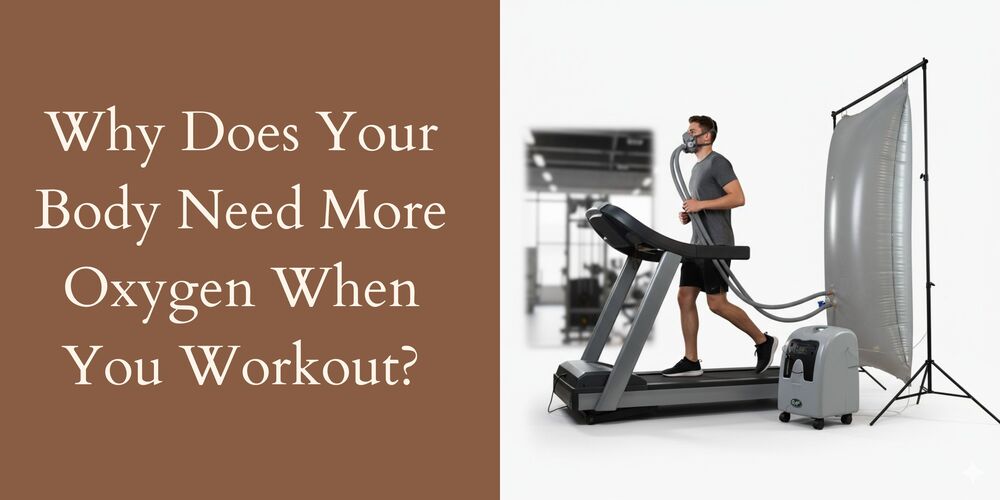Why Does Your Body Need More Oxygen When You Workout?
You already know regular physical activity is beneficial for you. You perhaps think about how it can increase your strength, energy, endurance, and sleep, manage your weight, and even improve your psychological wellness. But have you ever thought about what’s happening in your body that makes exercise so beneficial for you?
What Makes Exercise So Important?
Are you a person who makes excuses for not exercising?
Some of the common excuses that people make are “I am swamped,” “I don’t like to exercise,” “I don’t have the energy to exercise,” “My health isn’t satisfactory,” and “Exercise is laborious and discomforting.”
So here are some benefits of exercise that can convince you to get moving.
Improved Physical Wellness: Regular physical activity has a significant role in improving your cardiovascular health, strengthening bones and muscles, and maintaining your body weight.
Better Psychological Health: Need to unwind after a stressful day? Exercise is a mood lifter that reduces stress and anxiety and boosts your self-esteem.
Increased Energy Levels: Physical activity can help you feel more energized throughout the day, enhancing your productivity and ability to focus.
Better Sleep: Tossing and turning all night? Regular exercise can help you get a better snooze. However, strenuously working out too close to bedtime (less than one hour) can impact your sleep quality and sleep onset time.
Reduced Risk of Chronic Diseases: A regular workout routine helps reduce the risk of many health conditions and concerns, including heart disease, stroke, Type 2 Diabetes, metabolic syndrome, many types of cancers, high blood pressure, and arthritis.
Increased Longevity: Studies have shown that regular exercise can help you live longer and enjoy a better quality of life in your advanced years.
How Oxygen Consumption and Exercise are Connected?
During exercise, oxygen is consumed by muscles to produce energy through a process called cellular respiration.
The process is simple:
You breathe the ambient air. Oxygen enters the bloodstream and is transported to your muscles. Some of it is used right away, while the rest is stored by myoglobin. Regardless of whether you’re engaging in physical activity or not, oxygen in your body is utilized for glucose breakdown and ATP synthesis.
When you exercise, your muscles are hard at work and require more energy than usual, and the demand for oxygen increases to meet this need. As a result, your breathing rate and heart rate increase: to draw more oxygen into your bloodstream. Unlike at rest, the oxygen that reaches your muscles during exercise never leaves but is rather utilized to create ATP.
So what happens when the oxygen supply to your muscles is limited?
When your body runs low on oxygen, anaerobic metabolism takes over, and the muscles start generating energy without oxygen. This results in the production of lactic acid, leading to fatigue and performance drop. As the body continues to exercise, the oxygen demand of the muscles increases, and the anaerobic metabolism becomes unsustainable. The body responds by increasing oxygen delivery to the muscles through increased breathing rate, heart rate, and blood flow. This allows aerobic metabolism to resume and the muscles to produce energy more efficiently with the help of oxygen.
As a result, the switch from anaerobic to aerobic metabolism during exercise is a gradual process, with the body adjusting its oxygen uptake and delivery to the muscles in response to the changing demands of the exercise.
How Exercising with Oxygen can Help Your Body Meet the Increased Oxygen Demand?
Oxygen plays a significant role in the recovery process as it aids in restoring pre-workout ATP levels and helps the liver in the breakdown of lactic acid into carbohydrates. Ultimately, the amount of oxygen in your body during and after exercise directly impacts your performance and recovery rate. Simply put, the more oxygen you have in your body, the better will be your performance and recovery rate.
Thinking of a modality that helps optimize your oxygen intake and hasten the recovery process?
Hang on, Oxygen Enhanced Exercise offers your body the oxygen support it needs to transform your fitness performance and recover better and faster. Incorporating oxygen into your exercise regimen prevents lactic acid buildup that can cause cell damage and enhances cellular metabolism.
Wondering how?
All you need to do is to work out using the Turbo Oxygen System for 15-20 minutes. Turbo Oxygen System-a revolutionary oxygen delivery system that can increase oxygen levels in red blood cells and blood plasma- enables you to kickstart the rejuvenation process, which benefits your whole body, from your skin to the deep tissues. Notably, you’ll not feel any sense of muscle burn post-exercise as the oxygen neutralizes any lactic acid buildup.
Know Everything About Turbo Oxygen
Learn More About EWOT and Its Health Benefits




